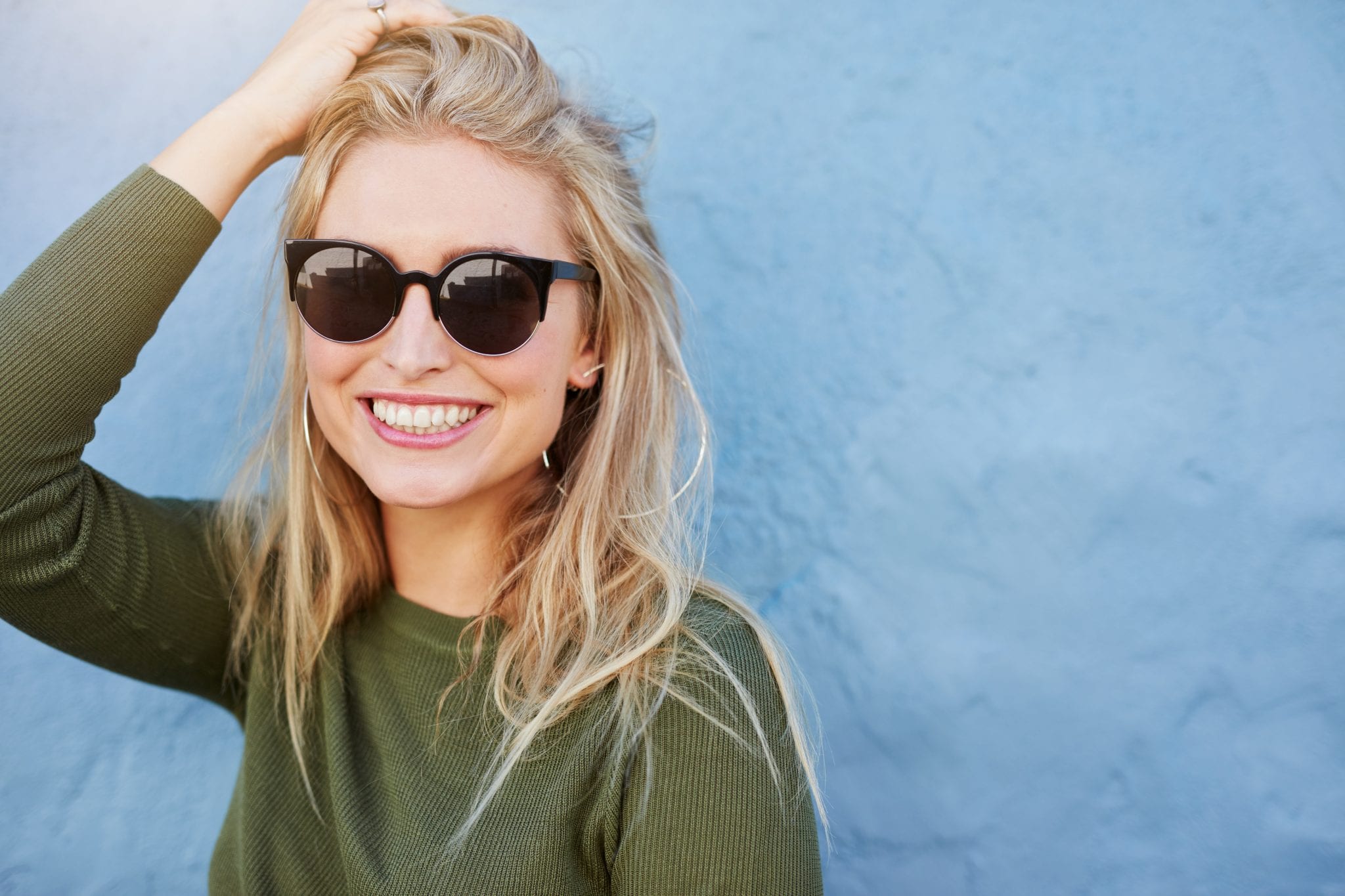When you buy a new pair of sunglasses, what is most important to you – making a great fashion statement or UV protection for your eyes? One of the best things about sunglasses is that you can have it all. You can look fabulous while still giving your eyes protection from the hot Florida sun.
Florida and the UV Index
Florida well deserves to be called the “Sunshine State.” Whether we escaped from the snow and ice up north or have always lived here, we enjoy one sunny day after another. However, as with many things in life, you can have too much of a good thing.
If you watch the local weather reports, you may have heard them referring to the UV Index. The Tampa Bay area is often ranked either “High” or “Very High” on a UV Index map. The higher the UV Index, the greater the risk of sunburn, skin cancer and eye damage.
Ultraviolet Radiation and Blue Light
The colors of the light spectrum begin with red, long wavelength/low energy light rays, and continue through the spectrum of red, orange, yellow, green, blue and violet, where the most dangerous, short wavelength/high energy light rays are found. Eyes need protection from the high energy blue and violet light rays.
Ultraviolet Radiation
UV Radiation: This light is invisible to the human eye and the most dangerous. There are three different forms of UV radiation.
- UVA and UVB can cause both long-term and short-term damage to the eyes. Sunglasses should block 100% of high energy UVA and UVB rays.
- UVC isn’t harmful since it’s absorbed by the ozone layer before reaching earth.
Blue light (HEV): These rays are visible and surround us. In fact, HEV (high energy visible) light is why the sky looks blue. It is not quite as dangerous as UV light, but blue light is still a high energy light that poses a significant risk to the eye. Sunglasses should block most or all blue light.
Blue light is also emitted by computers and many other digital devices. If you find yourself suffering from eye strain after working on your computer, a pair of computer glasses that block blue light should help.
How Ultraviolet Radiation and Blue Light Damage Your Eyes
UVA rays: These rays cause damage to the macula, part of the retina found at the rear of the eye.
UVB rays: UVB primarily harms the cornea and lens found in the front of the eye and can be more harmful than UVA rays.
Blue light: It penetrates the eye, reaching the retina at the back of the eye and damaging light-sensitive cells. Research is ongoing as to just how much blue light the eye can handle before sustaining damage, but the added blue light from smartphones, computers and other devices increases the risk of developing macular degeneration and even blindness.
Eye Problems Linked to UV and Blue (HEV) Light
Cataracts: Cataracts are very common, especially as people age. People experience increasingly blurred vision, poor night vision, a halo effect around lights and other symptoms. A cataract surgeon at Florida Eye can replace the damaged, cloudy lens with an artificial lens.
Macular Degeneration: Macular degeneration is extremely serious. It’s the primary cause of vision loss and blindness in seniors. A 2008 study in the Archives of Ophthalmology linked macular degeneration to HEV light. Those at highest risk also had low levels of antioxidants and vitamin C.
Pinguecula and Pterygia: Distorted vision results from growths on the surface of the eye.
Photokeratitis (snow blindness): Floridians may think it’s only necessary to worry about snow blindness if they take a skiing vacation (if you do, wear goggles). However, retina damage can also be caused by the sun reflecting from the water or sand. The sun isn’t the only possible cause of photokeratitis. Tanning beds and lamps can also damage your eyes.
While most forms of photokeratitis are temporary, staring at the sun can burn the retina and can cause serious, long lasting damage.
Which Sunglasses Provide the Most Protection?
Frames: The best protection is obtained from wraparound glasses. When the glasses fit closely to the side of your face, the amount of sunlight that can reach your eyes is greatly reduced.
Lenses: In lenses, you want UVA, UVB and blue light protection. Polarized lenses reduce glare and eyestrain by helping yo’u see more clearly.
Don’t forget children need sunglasses with UV protection also. Often, kids spend a lot more time outside in the sun than their parents do.
Great-looking sunglasses with protective lenses are one of the best gifts you can give yourself. Safeguard your vision and enjoy your life to the fullest. If you do notice any changes in your vision, schedule an appointment with your eye doctor.
For more information, call Florida Eye Specialists and Cataract Institute.



